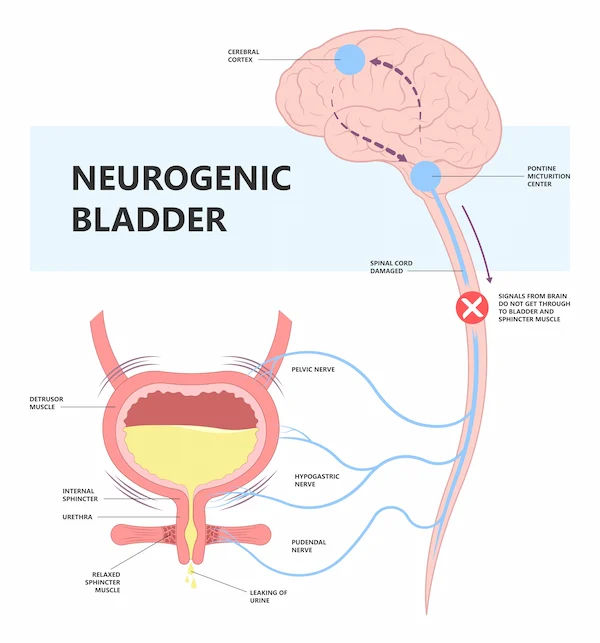Your Guide to Ayurveda Medicine: Principles, Benefits, and Modern Uses
Explore the principles, benefits, and modern applications of Ayurveda medicine. Learn how this ancient holistic system promotes balance, wellness, and personalised health care.

Written by Dr. Shaik Abdul Kalam
Reviewed by Dr. Vasanthasree Nair MBBS
Last updated on 26th Sep, 2025

Introduction
In a world increasingly focused on quick fixes, many are turning back to ancient wisdom for sustainable health. Ayurveda medicine, a 5,000-year-old holistic healing system from India, offers a profound and personalised approach to well-being. More than just a collection of herbal remedies, ayurveda is a complete science of life that emphasises balance between the body, mind, and spirit. This guide will demystify the core principles of ayurvedic medicine, from understanding your unique mind-body constitution (dosha) to exploring powerful treatments like Panchakarma. We will delve into the benefits of this natural approach for conditions from stress to digestive issues, and crucially, how to integrate it safely with modern healthcare. Whether you're seeking preventive strategies or natural support for a chronic condition, this comprehensive overview will equip you with the knowledge to explore the world of ayurveda intelligently.
What is Ayurveda? The Science of Life
Ayurveda, translated from Sanskrit as "the science of life" (Ayur = life, Veda = science or knowledge), is one of the world's oldest holistic healing systems. It originated in the Indian subcontinent and has evolved over thousands of years. Unlike systems that focus solely on treating disease, ayurvedic medicine is fundamentally proactive, aiming to maintain health and wellness by keeping the body's systems in balance.
The Historical Roots of Ayurvedic Medicine
The knowledge of ayurveda is believed to be of divine origin, passed down from the gods to sages and then to human physicians. The core principles are found in ancient texts like the Charaka Samhita and Sushruta Samhita, which detail sophisticated concepts of anatomy, surgery, and herbal treatments. This historical depth provides a rich foundation of observed knowledge and practical application that continues to be relevant today, forming the basis of many natural medicine practices worldwide.
The Core Goal: Achieving Balance and Harmony
The primary goal of ayurveda medicine is not to fight disease but to promote good health. It posits that health is our natural state, and disease arises when we fall out of harmony with our individual constitution and our environment. This balance is achieved by understanding and nurturing our unique physical, mental, and emotional characteristics. When this equilibrium is disrupted, it creates the ground for illness. Therefore, ayurvedic treatment is always highly personalised.
Consult an Ayurvedic Practitioner for the best advice
The Fundamental Principles of Ayurvedic Medicine
To understand how ayurvedic medicine works, one must grasp its foundational concepts, which view the universe and the human body as interconnected.
The Five Great Elements (Pancha Mahabhuta)
Ayurveda believes that everything in the universe, including our bodies, is composed of five fundamental elements: space (or ether), air, fire, water, and earth. These elements combine in the human body to form three primary life forces or energies, known as doshas. The unique proportion of these elements within each individual determines their dosha types and, consequently, their physical and psychological traits.
Understanding Your Unique Dosha: Vata, Pitta, and Kapha
The three doshas—Vata, Pitta, and Kapha—are the central concept in ayurvedic diagnosis and treatment. Everyone has a unique ratio of these three doshas, which is determined at conception (known as Prakriti, or your inherent nature). Imbalances in these doshas (Vikriti) lead to health issues.
Characteristics of a Vata Dosha Dominance
Here are the key traits associated with Vata dominance:
• Elements: Air and Space.
• Qualities: Dry, light, cold, rough, mobile, subtle.
• Physical Traits: Thin build, light bones, dry skin and hair, cold hands and feet.
• Mental/Emotional Traits: Creative, energetic, enthusiastic when in balance; prone to anxiety, worry, and irregular sleep patterns when out of balance. Learning how to balance vata dosha naturally often involves establishing routine, warmth, and nourishment.
Characteristics of a Pitta Dosha Dominance
Here are the key traits associated with Pitta dominance:
• Elements: Fire and Water.
• Qualities: Hot, sharp, light, liquid, oily.
• Physical Traits: Medium build, fair or reddish skin, strong appetite, prone to feeling hot.
• Mental/Emotional Traits: Intelligent, focused, good leaders when in balance; can become irritable, impatient, and critical when out of balance.
Characteristics of a Kapha Dosha Dominance
Here are the key traits associated with Kapha dominance:
• Elements: Earth and Water.
• Qualities: Heavy, slow, cool, oily, smooth, dense.
• Physical Traits: Solid, larger build, smooth oily skin, strong stamina.
• Mental/Emotional Traits: Calm, loving, supportive when in balance; can become sluggish, possessive, and resistant to change when out of balance.
The Importance of Agni (Digestive Fire)
Agni, the biological fire that governs metabolism, is another cornerstone of ayurvedic medicine. It’s not just about digesting food but also sensory experiences and emotions. Strong Agni leads to good health, vitality, and strong immunity, while weak Agni leads to the accumulation of toxins (Ama), which is considered the root cause of most diseases. Many ayurvedic remedies for stress and digestive issues focus on strengthening Agni.
Common Ayurvedic Treatments and Therapies
Ayurvedic medicine employs a diverse toolkit to restore balance, ranging from diet and herbs to detoxification procedures.
The Power of Ayurvedic Herbs and Formulations
Ayurveda boasts a vast pharmacopoeia of herbal remedies. These are rarely used in isolation but are combined into complex formulations to enhance efficacy and reduce side effects. Common herbs include:
• Ashwagandha: An adaptogen used for stress and anxiety and to boost energy.
• Turmeric: A powerful anti-inflammatory.
• Triphala: A blend of three fruits used to support digestion and detoxification.
It is crucial to source these from reputable providers, as quality can vary. If you are on other medications, it is advisable to consult a doctor before starting any new supplement, including Ayurvedic ones, to avoid interactions.
Panchakarma: The Ultimate Ayurvedic Detoxification
Panchakarma therapy is a renowned, intensive detoxification and rejuvenation program. It's a series of five (Pancha) therapeutic actions (Karma) designed to deeply cleanse the body of toxins (Ama). This is not a one-size-fits-all treatment but is tailored to an individual's dosha imbalance and is always conducted under strict supervision. It often includes therapies like medicated oil massages (Abhyanga) and herbal steam baths (Swedana).
Diet and Lifestyle: Dinacharya and Ritucharya
Ayurveda places immense importance on daily (Dinacharya) and seasonal (Ritucharya) routines. An ayurvedic diet for weight loss or health isn't about calorie counting but about eating foods that balance your dominant dosha. For example, a Pitta person would benefit from cooling foods like cucumber and melon, while a Vata person would need warm, grounding foods like soups and stews. Lifestyle practices like oil pulling, yoga, and meditation are also integral.
Benefits and Conditions Addressed by Ayurveda Medicine
The holistic nature of ayurvedic medicine makes it beneficial for a wide range of conditions, particularly chronic issues where mind-body balance is key. Many seek out the benefits of ayurvedic medicine for skin health, digestive disorders, and immune support. It is often used to manage:
• Stress, anxiety, and insomnia
• Digestive problems like IBS and bloating
• Chronic fatigue and low energy
• Joint pain and inflammation (e.g., arthritis)
• Skin conditions like eczema and psoriasis
• Hormonal imbalances
The focus is on identifying and treating the root cause of the symptom, rather than just providing temporary relief.
Integrating Ayurveda with Modern Medicine: A Collaborative Approach
The difference between ayurveda and allopathy is significant, but they are not mutually exclusive. A growing trend is integrative medicine, where the strengths of both systems are combined. For instance, modern medicine excels at acute care and diagnostics, while ayurveda shines in chronic disease management, preventive care, and improving quality of life.
It is essential to inform all your healthcare providers about the treatments you are receiving. If you are considering ayurvedic treatment for a specific condition, it is wise to discuss it with your doctor. You can consult a doctor online with Apollo24|7 to get a holistic view of your health plan. Self-diagnosing and self-treating, especially for serious conditions, can be risky.
How to Choose an Ayurvedic Practitioner and Medicine Safely
As interest grows, so does the need for caution. Here’s how to approach ayurvedic medicine safely:
1. Seek Qualified Practitioners: Look for a certified ayurvedic doctor (BAMS degree in India) or a well-trained practitioner from a recognised institution.
2. Verify Source of Medicines: Purchase ayurvedic medicines only from licensed and reputable pharmacies that adhere to good manufacturing practices to avoid contaminants like heavy metals.
3. Be Wary of Miracle Cures: Authentic ayurveda is a gradual process. Be skeptical of products or practitioners promising instant, miraculous results.
4. Disclose Everything: A good practitioner will take a detailed history, including your diet, lifestyle, and emotional state. Be sure to disclose any existing health conditions and modern medications you are taking.
If your condition does not improve after trying ayurvedic methods, or if you experience any adverse effects, book a physical visit to a doctor with Apollo24|7 for further evaluation.
Conclusion
Ayurveda medicine offers a timeless and profound roadmap to health that is more relevant than ever. By shifting the focus from merely treating illness to understanding and nurturing our unique constitutional makeup, it empowers us to take an active role in our well-being. Whether you are drawn to its personalised herbal remedies, its emphasis on digestive health, or its holistic philosophy, ayurveda provides valuable tools for a balanced life. Remember, the journey with Ayurveda is one of self-discovery and patience. Start with small steps, like adjusting your diet to your dosha or incorporating a daily routine. For personalised guidance, especially if you have specific health concerns, consider consulting both an ayurvedic expert and a modern medical doctor to create a safe and effective integrated health plan. Your journey to sustainable wellness begins with understanding your own nature.
Consult an Ayurvedic Practitioner for the best advice
Consult an Ayurvedic Practitioner for the best advice

Dr. Pepsy Jose
Panchakarma Practitioner
14 Years • BAMS, MD Ayurveda (Panchakarma)
Bengaluru
AYURRHYTHM HOLISTIC CLINIC AND PANCHAKARMA THERAPY, Bengaluru

Dr. Anjan Das
Ayurveda Practitioner
8 Years • Ayurvedacharya ( B.A.M.S )
Dumdum
Vedhive Ayurveda Clinic, Dumdum

Dr. Shiv Prakash Singh
Ayurveda Practitioner
19 Years • BAMS
Kolkata
Vedhive Ayurveda College Street, Kolkata

Dr. Rik Sadhukhan
Ayurveda Practitioner
8 Years • BAMS
Kolkata
Vedhive Ayurveda, Ballygunge, Kolkata
Consult an Ayurvedic Practitioner for the best advice

Dr. Pepsy Jose
Panchakarma Practitioner
14 Years • BAMS, MD Ayurveda (Panchakarma)
Bengaluru
AYURRHYTHM HOLISTIC CLINIC AND PANCHAKARMA THERAPY, Bengaluru

Dr. Anjan Das
Ayurveda Practitioner
8 Years • Ayurvedacharya ( B.A.M.S )
Dumdum
Vedhive Ayurveda Clinic, Dumdum

Dr. Shiv Prakash Singh
Ayurveda Practitioner
19 Years • BAMS
Kolkata
Vedhive Ayurveda College Street, Kolkata

Dr. Rik Sadhukhan
Ayurveda Practitioner
8 Years • BAMS
Kolkata
Vedhive Ayurveda, Ballygunge, Kolkata
More articles from General Medical Consultation
Frequently Asked Questions
1. Can I practice ayurveda on my own, or do I need a practitioner?
While you can adopt general ayurvedic principles like eating seasonally and following a daily routine, for specific health issues or treatments like Panchakarma, consulting a qualified ayurvedic practitioner is essential for a correct diagnosis and safe, personalised treatment plan.
2. Are there any side effects of ayurvedic medicines?
When prescribed by a qualified practitioner and sourced from reputable companies, high-quality ayurvedic medicines are generally safe. However, like any substance, they can have side effects or interact with other medications if used incorrectly. This is why professional guidance is crucial.
3. How long does it take to see results from ayurvedic treatment?
Ayurveda is a gradual process. Since it aims to correct deep-seated imbalances, results may take weeks or even months, depending on the condition's severity and chronicity. It focuses on sustainable, long-term healing rather than quick fixes.
4. Is an ayurvedic diet effective for weight loss?
Yes, an ayurvedic diet for weight loss can be very effective because it is personalised. Instead of a generic plan, it addresses the specific doshic imbalance (often Kapha) that may be contributing to weight gain, focusing on improving digestion (Agni) and metabolism.
5. Can ayurveda and modern medicine be used together?
Absolutely. This integrative approach is increasingly popular. Modern medicine can provide critical diagnostics and acute care, while ayurveda can support recovery, manage side effects, and address underlying imbalances. Always keep all your doctors informed about all treatments you are undergoing.




